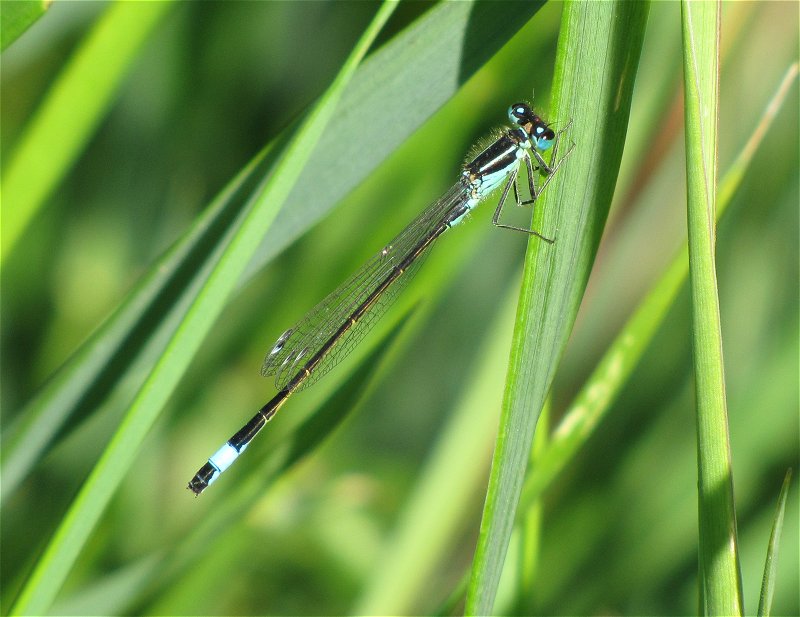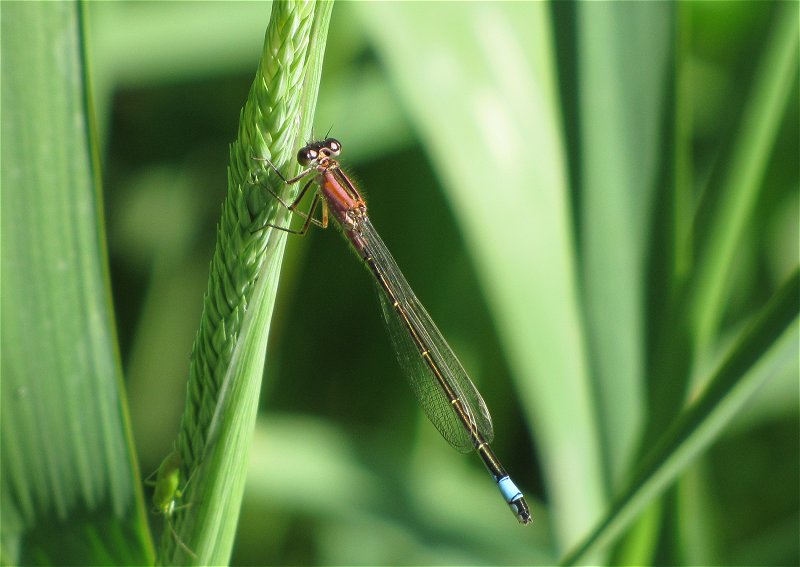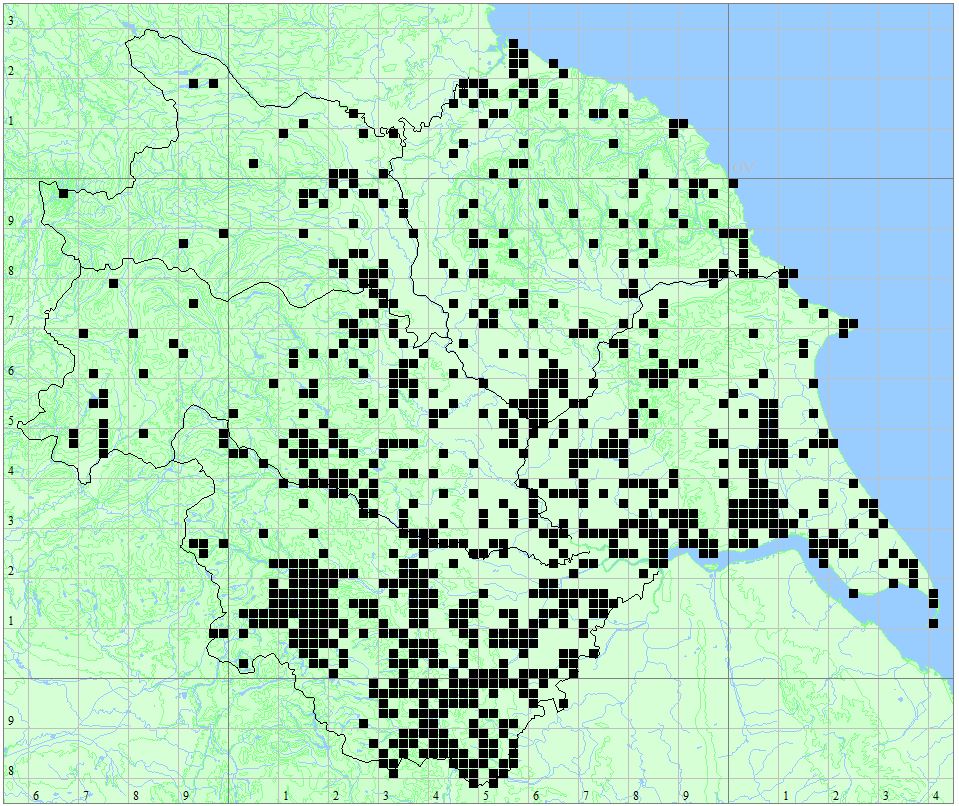<-Previous Species – Next Species->
Length
29-34mm; Wingspan: 35-40mm; Hindwing 14-21mm
Male
Dark bronze-black metallic with blue segment 8. Blue or green sides to the thorax and antehumeral stripes. Blue eye spots. Pterostigma is distinctive being bi-coloured black and white. Tips of the lower appendages diverge.
Female
Occur in several colour forms dependent on age. Segment 8, though not always blue, is usually clearly different from the other sections. Start as either rufescens with a reddish-pink thorax and blue segment 8 or violacea with a violet thorax and antehumeral stripes, black humeral stripes and blue segment 8. After around eight days they mature and change colour, rufescens become greenish-brown of the form rufescens-obsoleta. The form violacea mature into two separate from. The first is infuscans which is a pale green colour, and retaining the black humeral stripes. The second is an andromorph form which adopts the same colours as a male.
Behavior
Often found in marginal vegetation in large numbers. Copulation last from between two to six hours, due to this, it is the most frequently observed species seen in the wheel position. Often females selected by the males are still in their immature colour forms. Females oviposit alone onto the tissue of aquatic plants and debris, where they are not usually harassed by the males. Frequently found in dull weather when other species are inactive. Larvae emerge after one to two years.
Habitat
Wide range including garden ponds, lakes, rivers, canals and ditches. Can also be found in brackish conditions and acidic peaty pools. More tolerant of pollution than other species, only really avoiding fast-flowing water. Readily disperses and is one of the first species to colonise new sites.
Flight Period
 Status
Status
Common and widespread throughout the area.
Distribution Map
Locations
- Rodley Nature Reserve
- Moorgates Quarry LNR
- Thorne Moors – Humberhead Peatlands NNR
- Thorpe Marsh
- Oakhill & Goole Brick Ponds
- Paull Holme Strays
- Treeton Dyke
- Rabbit Ings
- River Foss, Towthorpe Bridge
- Walton Colliery Nature Park
- Pugneys Country Park
- The Yorkshire Arboretum
- Hurst Dam
- Nosterfield Local Nature Reserve
- Timble Ings
- Fairburn Ings
- Johnny Brown’s Common
- Potteric Carr
- Dundale Pond
- Spurn Point
- Skipwith Common
- Saltmarshe Delph
- River Hertford
- Pulfin and High Eske Nature Reserve
- Pocklington Canal
- Oak Road Lake, Hull
- North Cave Wetlands
- Market Weighton Canal and Newport Ponds
- Leven Canal
- Hornsea Mere
- Filey Dams
- Eastrington Ponds
- Broomfleet Washlands
- Noddle Hill Nature Reserve
- Allerthorpe Common
- Tophill Low Nature Reserve
<-Previous Species – Next Species->


